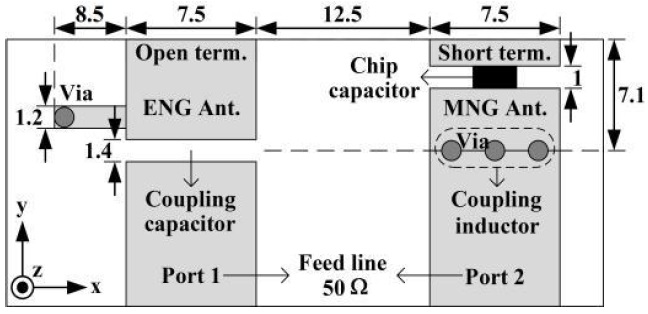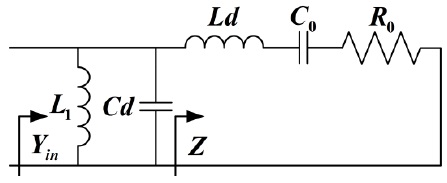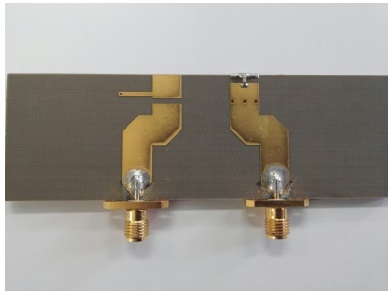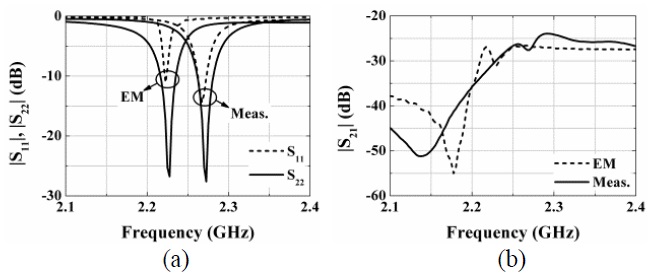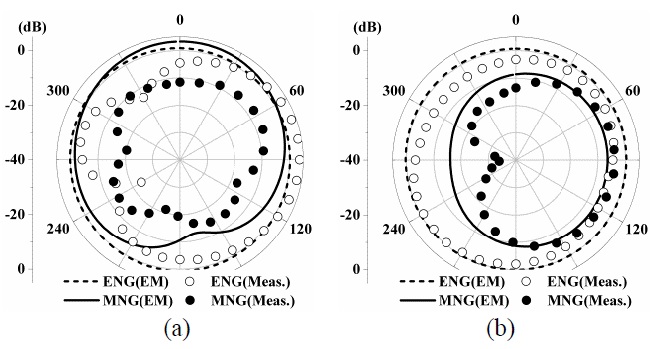



Multiple-input multiple-output (MIMO) technology is now widely employed in order to increase the reliability and the channel capacity of modern wireless communication systems. However, the available space for antennas in recent mobile terminals is very limited. Moreover, meeting the requirements of compact size, high isolation, low envelope correlation, and high radiation efficiencies in limited space usually available is quite challenging [1,2]. To achieve these goals, many antenna structures have been proposed. In [3], a planar inverted- F antenna (PIFA) with a dual-feed was presented. Two PIFAs are placed at the corners of a mobile terminal for the largest possible separation, utilizing polarization diversity [4]. There have been trials to use photonic band-gap or split ring resonator [5] structures between the radiation elements in order to improve the isolation. A decoupling network [6] is one promising means of satisfying the MIMO requirements. However, these two methods require an additional structure or circuit between the antennas. To overcome this problem, we adopt two types of metamaterial (MTM) zeroth-order resonant (ZOR) antennas. One is the epsilon-negative (ENG; open terminated) antenna, and the other is the mu-negative (MNG; short terminated) antenna [7]. It is well known that MTM ZOR antennas can be made as small as possible. In addition, it will be shown that the performance of the proposed MIMO system far surpass those of recent works in terms of the size, isolation, envelope correlation, and antenna efficiencies.
Ⅱ. Antenna Design and Simulation
Fig. 1 shows the geometry of the proposed MIMO system composed of the ZOR ENG and MNG antennas with their dimensions designed at 2.2 GHz. The antennas are fed by two 50 Ω microstrip lines with width of 7.5 mm on a Teflon substrate (
In Fig. 2, we show the equivalent circuit of the MNG antenna short-terminated. The electrical length
and
In (1), as
For the ENG, the equivalent circuit is exactly the dual of Fig. 2 [8]. The calculated shunt inductance
Fig. 3 shows the photograph of the MIMO system consisting of ENG and MNG antennas. Two feed lines have been somewhat bent away from each other for easy mounting of SMA connectors. Fig. 4(a) and (b) show the electromagnetic (EM)-simulated and measured |
In Fig. 5(a) and (b), we show the gain patterns
[Table 1.] Comparison of multiple-input multiple-output antenna performances

Comparison of multiple-input multiple-output antenna performances
In Table 1, the various performances of the proposed antennas are compared with those in [4] (A type), [5] (B type), and [6] (C type), and the proposed antennas prove to be superior to the others to the best of our knowledge. The gains and radiation efficiencies of the each antenna were measured while the one port was connected to the source and the other one was matched.
A very compact MTM-based ZOR MIMO system consisting of ENG and MNG structures has been designed, fabricated, and evaluated in terms of its size, isolation, envelope correlation, and radiation efficiencies. The performances of the proposed antenna have been compared with those of recent competitive works. Despite the small separation (0.09
